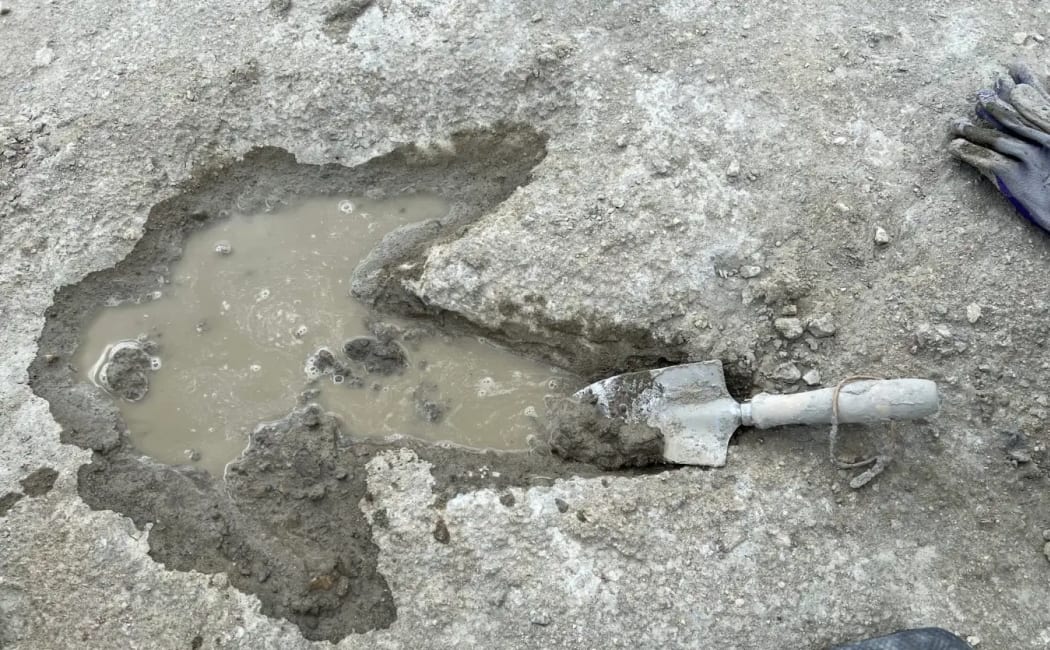Europe’s Longest Dinosaur Trackway Unearthed in Oxfordshire Quarry

Europe’s Longest Dinosaur Trackway Unearthed in Oxfordshire Quarry
By Blogentia ⏐ Updated October 14, 2025
A remarkable paleontological discovery has been made in the United Kingdom — scientists have uncovered Europe’s longest dinosaur trackway at a fossil-rich site in an Oxfordshire quarry. This extraordinary find stretches back 166 million years to the Middle Jurassic Period, shedding light on how ancient dinosaurs roamed across what was once a lush, tropical environment.
A 220-Meter Trail Left by a Giant Sauropod
The excavation, led by experts from :contentReference[oaicite:0]{index=0} and :contentReference[oaicite:1]{index=1}, revealed a single dinosaur trackway spanning 220 meters (approximately 722 feet). This incredible stretch of footprints is believed to have been made by a gigantic long-necked sauropod — one of the largest creatures ever to walk the Earth.
According to researchers, the dinosaur footprints are preserved in extraordinary detail, making this the longest sauropod trackway ever documented in Europe. It surpasses previously known track sites, turning the Dewars Farm Quarry near Bicester into a paleontological treasure trove.
A “Dinosaur Highway” From the Jurassic Period
The quarry site has long been recognized for its fossil potential, but this new discovery has exceeded expectations. The trackway is part of what scientists are calling a “dinosaur highway” — a network of ancient pathways left by different species of dinosaurs as they migrated or moved across muddy lagoon areas millions of years ago.
The footprints, which date back to the Middle Jurassic Period, were left in soft sediment that later solidified into limestone. Two main types of dinosaurs contributed to these prints: the Sauropods (herbivorous giants with long necks and tails) and the Megalosaurus (a powerful carnivore and one of the first dinosaurs ever described scientifically).
Detailed Preservation Offers Clues to Ancient Behavior
Some of the individual footprints measure up to 1 meter in length, showcasing the massive scale of these prehistoric creatures. Researchers noted fine details in the impressions — including how the mud was pushed and deformed as the dinosaur stepped — offering rare insights into how they moved and behaved.
Fascinatingly, several tracks appear to overlap, suggesting that herbivorous sauropods and predatory megalosaurs may have shared the same pathways, raising intriguing questions about how different dinosaur species coexisted and possibly interacted.
A Discovery Sparked by Sharp Observation
The story of this major discovery began when a quarry worker, Gary Johnson, noticed unusual raised bumps on the limestone surface while operating heavy machinery. His quick action in alerting experts led to a full-scale scientific excavation involving over 100 specialists and volunteers.
Johnson’s keen eye transformed a regular workday into a moment of scientific history, emphasizing the importance of collaboration between industries and researchers in preserving our planet’s past.
A Window Into a Tropical Jurassic World
Besides the trackway, the excavation uncovered smaller fossils including crocodile jaws and marine shells. These remains paint a vivid picture of the environment during the Middle Jurassic Period — a warm, tropical coastal lagoon where dinosaurs, crocodiles, and marine creatures lived side by side.
Scientists believe this site may once have been a crucial habitat or migration corridor for dinosaurs moving between different ecosystems. Such fossil-rich areas help paleontologists reconstruct ancient ecosystems with incredible accuracy.
Why This Discovery Matters
The Oxfordshire dinosaur trackway isn’t just a record-breaking find — it’s a key piece in understanding the evolutionary history of dinosaurs in Europe. At 220 meters, it offers a continuous, uninterrupted sequence of footprints that allow scientists to analyze walking patterns, herd behavior, and species interactions.
Dr. Katy Bowman, a leading paleontologist at Oxford, explained that “this discovery gives us an extraordinary, almost cinematic glimpse into dinosaur movement 166 million years ago. It’s like watching them walk across an ancient landscape frozen in time.”
Future Research and Preservation Plans
Efforts are now underway to preserve and digitally document the trackway using advanced scanning technology. This will allow scientists worldwide to study the footprints in high resolution without disturbing the site. The team also plans to publish detailed research papers to further unravel the ecological story behind this Jurassic treasure.
Additionally, discussions are in place to create a visitor-friendly exhibition that will showcase the trackway, making it one of the most significant paleontological attractions in Europe.
A Landmark Moment in European Paleontology
With this discovery, the Dewars Farm Quarry has secured its place as one of the most important dinosaur fossil sites in the world. The Europe’s longest dinosaur trackway is not only rewriting the prehistoric history of Britain but also fueling a new wave of interest in paleontology across the continent.
As researchers continue to uncover secrets buried beneath our feet, this discovery stands as a powerful reminder that our planet’s past still has many extraordinary stories waiting to be told.
